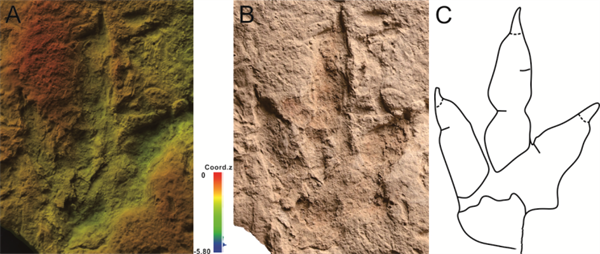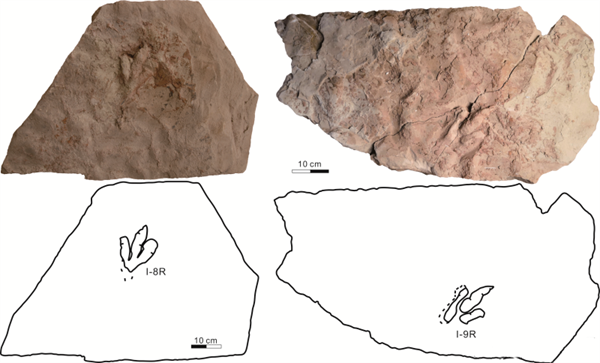Fossil footprints of theropod dinosaurs discovered in Hami, Xinjiang

A team of researchers led by Wang Xiaolin, a research fellow at the Institute of Vertebrate Paleontology and Paleoanthropology (IVPP), Chinese Academy of Sciences (CAS), in collaboration with Shenyang Normal University and the Hami Culture and Museum, has recently published their findings on fossilized footprints of theropod dinosaurs in the international journal Historical Biology. This marks the first discovery of dinosaur footprints in the Turpan-Hami Basin, increasing the diversity of the Hami pterosaur fauna.
Since 2006, the expedition team has conducted fieldwork in the Gobi Desert of Hami for over a decade, uncovering many male and female Hamipterus tianshanensis, a type of pterosaur, ranging from juveniles to adults. Additionally, they made the world's first 3D-preserved pterosaur eggs and embryos discovery. These findings have significantly advanced people's understanding of the morphological traits, systematics, growth patterns, reproduction, ecological habits, fossil preservation, and mass mortality of the Hami pterosaur fauna.

According to Wang, Hami has become the largest and most fossil-rich site for pterosaur discoveries worldwide. Efforts are underway to establish the Hami Pterosaur-Yadan National Geopark, and the world's first pterosaur museum. The effective protection of these important fossils and their respective sites will provide a platform for young people and the public to learn about these once-thriving, but now extinct, enigmatic flying and crawling creatures that roamed the Earth.
 Attractions
Attractions Dining
Dining Culture
Culture